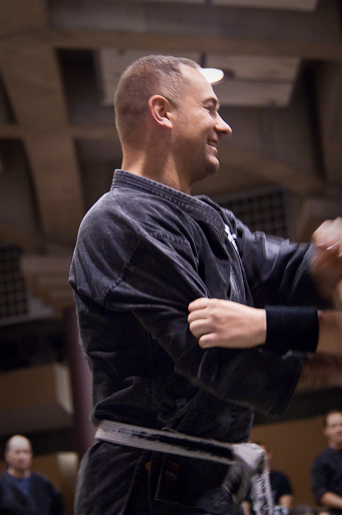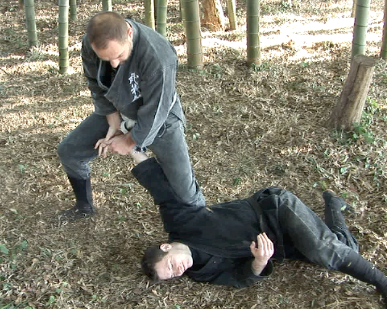From BUJINKAN TASMANIA by Duncan Stewart

Nagato Shihan once said that when he stopped asking questions, he received the answers.
Wait for your moment.
Training is about developing perseverance and patience. If you cannot do this, you will become an annoyance in the dojo and elsewhere.
People race to Soke to ask him to experience the “feeling” of his latest inspiration. The fact is, the initial inspiration cannot be reproduced, so by doing this, you are receiving some different.
If you were meant to experience something from Soke directly, you would be approached or asked by him to be his uke.
If not, it is not your time. Be patient, wait.
If you happen to be asked to demonstrate a technique, in particular at the beginning of class or a new session, consider it as a chance to do something that you wish to receive teachings in. Do you understand? Instead of going into the middle of the dojo with your favourite uke and doing the best technique you know, do something that you wish to receive more training in. It`s your moment to be selfish!
Recently, for two classes in a row, I performed a basic version of Musha Dori. Why? Because I wished to see Sokes way of looking at this fundamental movement . After I did this, I saw many people move straight into free flowing henka rather than working on the basic form I had shown. Obviously, everyone thinks they are beyond the basics? From what I saw, many should have been sticking to the kata form.
If you are near a conversation that he has started with a group of people and you are not in that initial group, that conversation is not for you. If it was meant for you, you would have been there. I see people stop training and run over to eaves drop on conversations, etc. Personally, I feel sorry for their training partner left standing alone.
Budo is about manners. In fact, Soke mentions that the training starts and finishes with manners. Manners is the base for preserving human relationships. In Japan, great importance is put on maintaining harmony within society and groups. In budo, we call this the “Bushi no wa”.
And to reflect on this a little more, we see that Kyojutsu Tenkan Ho or Kyojutsu Houben Makoro is something that is integral in maintaining peace among warriors and the world in which we all live.
To try and gain a working appreciation of this ( especially when living in Japan ) is very important. Japans social customs are often very subtle and almost invisible to the foreigners eye.
” There was a puppy who ran to his master, please to see him. The puppy wanted to show his affection and loyalty to his master and jumped up onto his thighs and wagged his tail happily. The master got angry as the puppy had soiled his pants.”
People wish to help others, and try to show their loyalty in many ways. This can be annoying. They become a lesson of tolerance as they get in the way. It is better to understand that your loyalty is shown from your consistent character. That is all that is needed.
Don`t be in a rush to experience things, or please people. First, check your motivations and try to figure out what is the most important point.
Don`t hide your in abilities by pushing forward your strengths. In fact, it is better to show your weaknesses and become happy to work with them. To put forward your strengths is to become a Tengu. Hide your power, work on your weaknesses. Not revealing your strength is to also deceive those that work to manipulate you or see your weaknesses as not a showing of true self-confidence or actual inner strength.
Be patient, wait, observe and don`t make judgements too quickly. Your own desire for righteousness is your own downfall.
One Gokui no Uta comes to mind: ” If you think there is something there is nothing, If you think there is nothing there is something.”
Endure these moments. Accept them and train. Focus your intention on being in the moment as much as possible. These moments are where you can receive Shinden,Kuden and Taiden free from ego. You can absorb the teachings directly, even if you cannot intellectually understand. The teachings drop to your hara and you wait. Eventually, your depth of absorption and understanding will come out in your sweat and evaporate into the air ( Shizen Gyo Un Ryu Sui ). And you may come to understand the nature of the water and clouds, the cycle of life and natural understanding. The concepts of Saino Kon Ki and Rokkon Shojo are integrated here.
In saying this, I don`t profess to understand myself.
Don`t desire the answers, don`t desire to be your teachers uke.
Be present and live in the space that you inhabit and, accept it.
Words based on recent feelings and observations.


…


